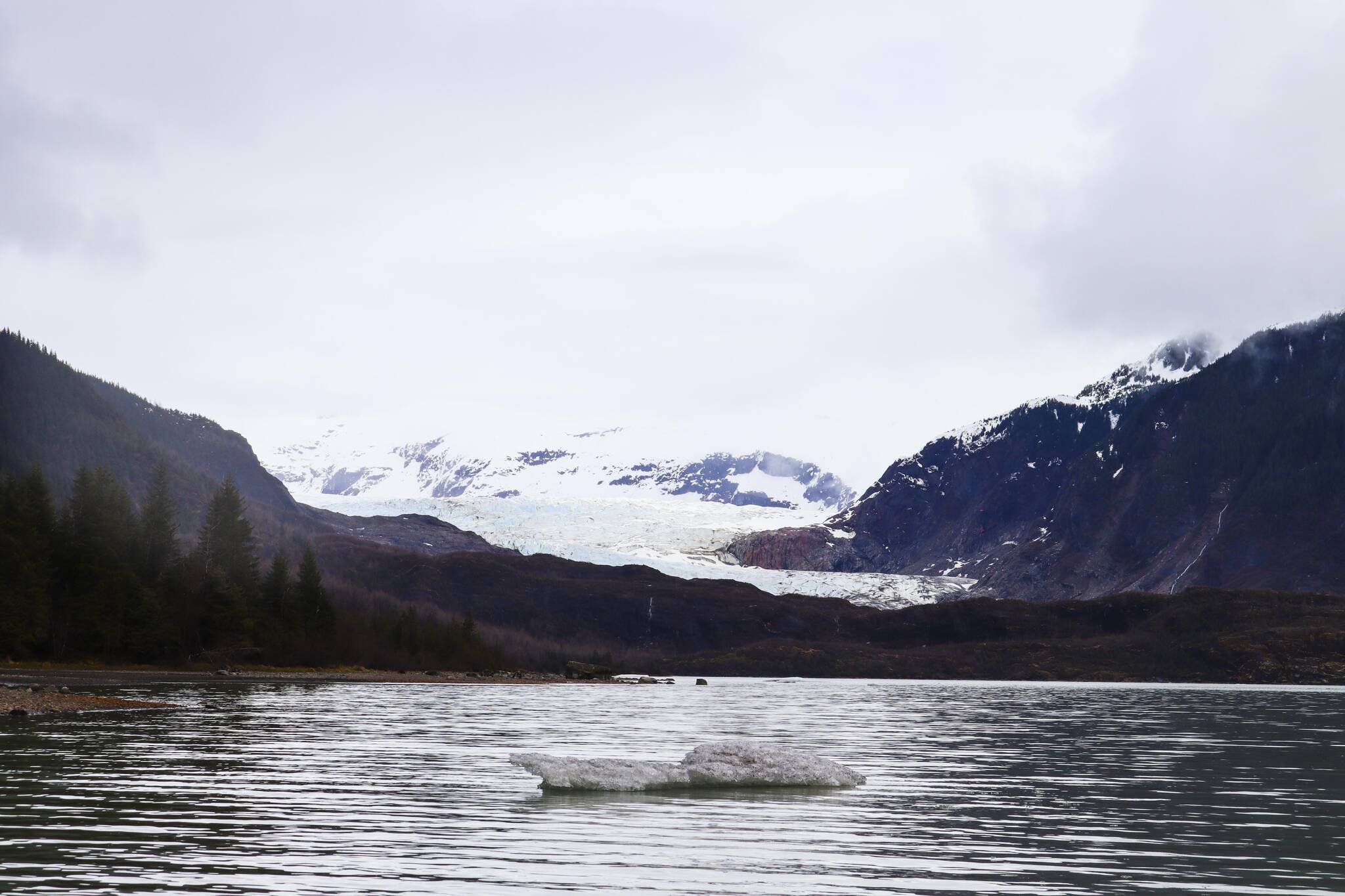By Jim Sepel
After reviewing the USFS Mendenhall Glacier Visitor Facility Improvements Environmental Impact Statement which proposes allowing two 49-passenger gas/diesel powered boats or two 35-passenger electric boats (both requiring USCG inspections), I found several problems with these alternatives. First, when I asked the USFS for their “navigation chart” for Mendenhall Lake, they sent me their “bathymetric chart”. A bathymetric chart only gives a general “layered” view of the depths, which happens to show depths over 200 feet. For navigational purposes, a NOAA Hydrographic Chart is required. There is no NOAA chart for the lake. Thus, there is no chart that shows navigational hazards such as the boulders that glaciers leave behind or any other navigational hazards, especially along shorelines or where they propose to build their docks. These boats will have a 4-foot draft. Surely there are boulders out there?
Second, from my over 30 years of conducting grounding and sinking insurance damage claims, I have learned that “The Rock Always wins.” It doesn’t matter if the boat is a 20-foot North River, a 35-foot inspected tour boat (like the one that sank next to Aaron Island a few years ago due to “operator error”), or a 1,000-foot cruise ship like the Costa Concordia (of which I served as a consultant on that casualty, another “operator error”). If one or both of the tour boats collide, or ground, the thin (1/4-inch) aluminum hulls can easily fail, even at no wake speeds. The bilge pumps on either of these boats simply will not keep up with a serious hull breech. The USFS chart does show steep gradients leading down to over 200 feet in depth. A SCUBA salvage diver is limited to 20 minutes at 130 feet. Any attempt to salvage a vessel in over 200 feet(with no visibility) will require “compression diving,” which requires a tug and or barge with crane, and a decompression chamber. How would you get that on Mendenhall Lake? A sunken gas/diesel power boat would leak up to 300 or more gallons or fuel, not to mention the oil in the motors. Anyone can see that this places the Mendenhall Lake and the Mendenhall River (vital salmon habitat) at major risk. The cleanup all along the Mendenhall River would be extremely difficult. A sorbent boom can’t be anchored in deep water.
The EIS states the the risk of boating would be minor. Really? Likewise an electrical boat with a bottom hull full of batteries could leach lead and acid into Mendenhall Lake and then rapidly down river, forever. This could happen if the battery case is compromised in the grounding. At that depth, water pressure of 101 pounds per square inch could be devastating. Also, the EIS is severely lacking the following basic elements: an operations plan for how the boats will operate; a search and rescue plan; a salvage plan; pollution mitigation and cleanup plan; and a fuel transfer plan (they plan to fuel the boats from a fuel truck near Skater’s Cabin). And, to make matters worse, the Empire reported a few days ago that our Governor and his DNR Commissioner stated that “the public has the right to boating on Mendenhall Lake.” I’m an avid boater; but, I don’t think I have the right to risk polluting such a pristine habitat.
The EIS plans for 999,000 visitors per summer. Two boats simply won’t be enough to provide equal access as described in the EIS. More boats makes the risk that much worse. Also, I can’t imagine that the two-lane road to the visitor center could accommodate all those buses. The EIS stated that the USCG said to “assume that ML is navigable”. The truth is, as of today, the USCG says that it is not navigable and that the river is only navigable up to Montana Creek (this is reportedly under study and could take years). During the summer, the river is used commercially for non-motorized tours down the river. Finally, the EIS violates the basic premise of the 1969 NEPA act, which says that the federal government will analyze all impacts this project may have to the environment. In my opinion, the USFS has not done that and this EIS is totally inadequate. It is just too risky to put any motorized boat on Mendenhall Lake. There is no question that tourism is great for my business; however, for the past 15 years I have been asking my friend, Kirby Day (local cruise ship representative): “How many tourists are enough?”
• Jim Sepel is an accredited marine surveyor, a retired United States Coast Guard commander, member of American Boat & Yacht Council and state of Alaska Boating Safety Advisory Council; and president of Sepel & Son Marine Surveying Inc., since 1992. Columns, My Turns and Letters to the Editor represent the view of the author, not the view of the Juneau Empire. Have something to say? Here’s how to submit a My Turn or letter.

